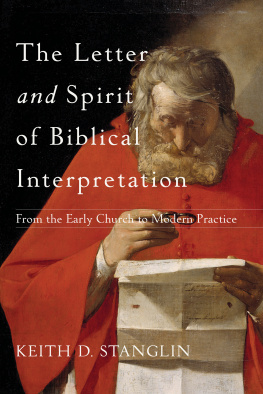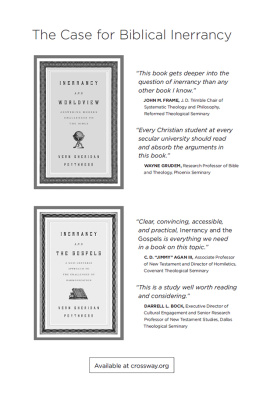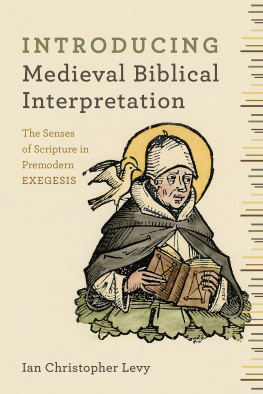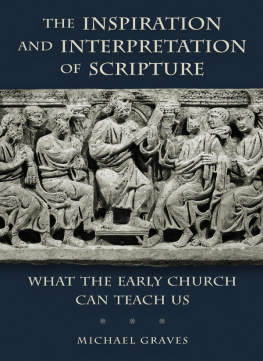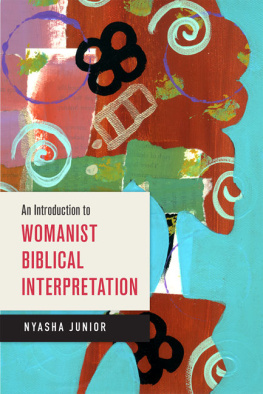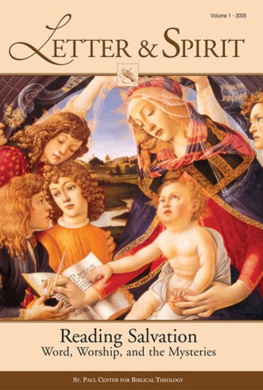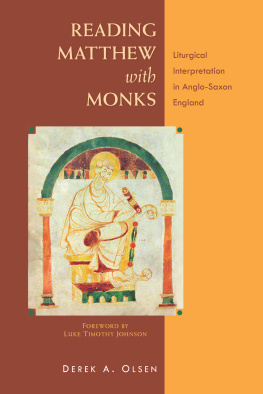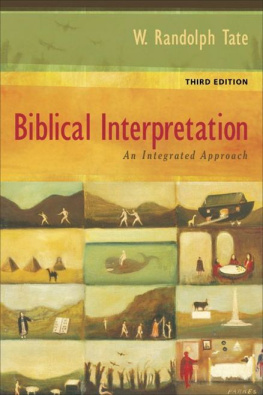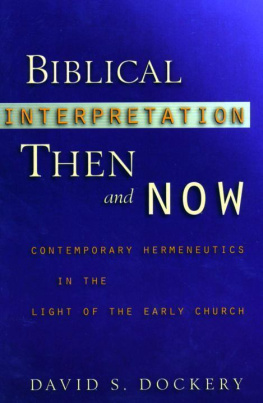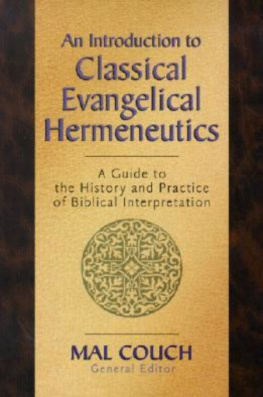1. Introduction to the History of Biblical Interpretation
2. Earliest Christian Exegesis
3. Later Patristic Exegesis
4. Medieval Exegesis
5. Early Modern Exegesis
6. The Rise of Historical-Critical Exegesis
7. (Ir)Reconcilable Differences?
8. A Way Forward
Preface
W hen people have asked me what I am reading about, or which course I am teaching, or what the subject of this book is, and my answer is the history of interpretation, I have noticed a facial expression that, as a historical theologian, I have become accustomed to seeing. Their look, or sometimes their accompanying explanation of it, conveys the message that both history and interpretation are sufficiently boring on their own, and the combination of the two must be dreadful. To ask about the history of biblical interpretation, however, is to ponder very important questions for our own day. How has the church viewed the Bible? How have the perspectives of the past influenced the way we read the Bible? And, in light of the different ways that Christians have read the Bible, what is the proper method of interpreting the Bible, of rightly handling the word of truth (2 Tim. 2:15)? What are our goals in biblical interpretation? What questions do weor should webring to Scripture?
In some respects, the present study is something like an extension of David Steinmetzs celebrated and often anthologized article The Superiority of Pre-critical Exegesis, which I first read way back in graduate school and to which I owe a great debt for articulating plainly what I was already thinking at the time. It is, I believe, a model of accurate historical description of premodern exegesis coupled with a keen interest in what the past can teach us today. Such are the aims of my book.
This book, lying at the intersection of church history and biblical interpretation, is directed primarily to readers who are specialists in neither discipline but have some interest in both. At the risk of being too specific, perhaps the ideal reader is a student who has had about one course in each area. But the goal is to reach anyone interested in either one of these topics, including students, ministers, and scholars.
I have had the pleasure of lecturing on the history of biblical interpretation not only to my own students but also in a variety of settings in the classroom and beyond, including at Harding University and Pepperdine University. After I delivered one of those guest lectures to Danny Mathewss class at Pepperdine in 2011, he, never lacking for ideas, suggested to me that I should write a brief book surveying the topic. I had too many other projects going at the time and obviously did not get around to it immediately, but he deserves the credit (or the blame) for proposing it, though the final product is longer than either of us intended. Short little books about big ideas always seem to grow, but I have tried to keep it under control.
My writing became more serious (temporarily) in the summer of 2015, during a brief fellowship at the Wesleyan Center at Point Loma Nazarene University, San Diego. My thanks go to Mark Mann, director of the Wesleyan Center, for inviting me for that second stay and making arrangements for my summer scholar lecture, How to Read the Bible: Then and Now. He also ensured that my family was accommodated once again with an unbeatable ocean view. Closer to the end of the project, my research and writing were aided by a sabbatical granted by the administration and faculty of Austin Graduate School of Theology in the spring of 2017, for which and to whom I am grateful.
In addition to informal conversations about this book with friends, family, and colleagues over the last few years, several people have interacted directly with earlier drafts of this manuscript. My colleagues at Austin Grad listened (mostly) patiently as I read through a couple of chapters and bounced different outlines off them. Others have likewise given generously of their time and effort by reading through drafts of chapters at various stages and offering valuable feedback: Mark Elliott, Michael Legaspi, Peter Leithart, David Wilhite, Robert Louis Wilken, John Wright, and Mike Young. I am in their debt.
Throughout the entire process, it has been a genuine privilege to work with Dave Nelson at Baker Academic. His recommendations (never demands), along with his patience, sincerity, encouragement, support, and humorat a distance and in personalways struck the right chord at the right time. Providence must have known that I needed to work with an editor who would understand and appreciate my obscure references to classic rock. Dave, Brian Bolger, and all the editorial staff at Baker Academic have helped this book to be better than it otherwise would have been.
In this month of historically significant and recognizable anniversaries, I cannot help mentioning that Amanda has (been) stuck with me officially for twenty years this month. She, together with Paul, Isaac, and Rachel, as they all well know, are my joy and love. I am so proud of them, and they are a constant blessing from the Father above. They deserve the utmost thanks simply for putting up with me on a daily basis. As usual, they bore the brunt of the book storm and could always be trusted in the last weeks to ask me whether the book was finished. I needed that.
Keith Stanglin, Austin, Texas
October 2017
Abbreviations
| ACCS | Ancient Christian Commentary on Scripture. Downers Grove, IL: InterVarsity, 19982010 |
| ACW | Ancient Christian Writers. New York: Newman Press/Mahwah, NJ: Paulist Press, 1946 |
| ad | replies (by Thomas Aquinas) to objections |
| AD | anno Domini, in the year of our Lord |
| ANF | Ante-Nicene Fathers |
| BC | before Christ |
| BDAG | Danker, Frederick W., Walter Bauer, William F. Arndt, and F. Wilbur Gingrich. Greek-English Lexicon of the New Testament and Other Early Christian Literature . 3rd ed. Chicago: University of Chicago Press, 2000 |
| ca. | |

